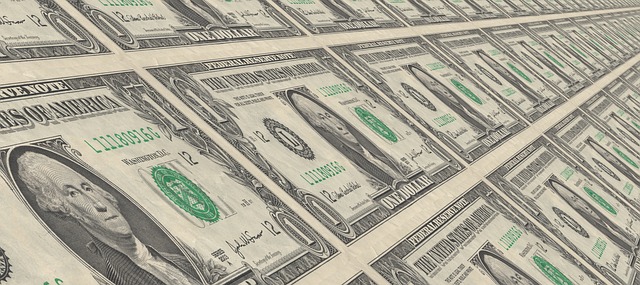Market Money and the Rationale for Central Banks
In the discussion of central banking policy guided by either rules or discretion, one must wonder why policy makers are attempting to reinvent the wheel. At their best, central banks attempt to emulate the functions of financial markets. These markets work to promote monetary equilibrium, offsetting any excess demand for or supply of money, and thus reducing the variance of the price level. It is not clear that a central bank can be more effective than financial markets in determining the appropriate quantity of money and in sustaining the health of credit markets and robust economic growth. Without being subject to competition and profit and loss, we cannot expect that monetary policy will generate superior results.
I will first show how financial markets naturally promote monetary equilibrium. I will follow by briefly revisiting the rules vs. discretion debate. While a monetary rule is certainly preferable to discretionary monetary policy, uncertainty surrounding the choice and implementation of a rule makes such a regime problematic. Rules that constrain the ability of policy makers to manipulate the growth rate of money and allocation of credit better enable investors to form expectations concerning future economic conditions. But, while rules sound good in theory, one must keep in mind that political forces determine their selection and implementation. Replacing discretion with rules merely moves the problem to a higher level of abstraction.
Endogenous Money
Textbook economic theory teaches that competitive markets efficiently allocate resources toward the production of goods consumers value most highly. This principle holds for money when markets are legally allowed to produce it. Market forces determine money production and interest rates in a manner that efficiently accommodates real economic growth and changes in demand for money in its many forms. The equation of exchange implies that the supply of money must equal demand for money in equilibrium. This total demand for money is divided between portfolio demand (money individuals plan to hold long term) and transactions demand (money individuals plan to spend). If demand for money increases in either of these forms, the price of money will tend to rise. In a world where the money stock is unable to adjust in response to a change in the price of money, markets experience this change as a long-run deflation. When money creation is unhampered by regulation, however, markets respond to changes in demand for money by providing more of it.
To understand how the market facilitates money creation, it is useful to divide money creation between production of base money and production of credit. Money will be produced if the cost of producing money is less than the price it will fetch in the market. Base money — the commodity accepted as money — is created if the cost of producing an additional unit of it is less than value of the unit itself. Thus, if the production of an ounce of gold costs 0.9 ounces, producers will continue providing gold to the market until this discrepancy is eliminated by some combination of an increase in the quantity of gold supplied and an increase in the cost of supplying an additional ounce of gold.
Credit creation is governed by the interest rate, which represents the rate of return earned by agents who choose to lend resources under their control rather than directly employing them for production or consuming them. Credit creation, then, tells us something about value that will be produced in the future. If the banking system, on net, increases the total value of credit extended, then the expectation of the system is that the value produced by the economy will increase. Thus, if the expected rate of real economic growth increases, the credit system will increase the total value of lending and, therefore, the quantity of money until the real rate of interest is equal to the expected real rate of growth.
Short-Run Dynamics
Now suppose investors expect a downturn is on the horizon, and the value of credit extended begins to shrink. This process may feed back on itself as expectations of less productivity become self-fulfilling through the increasingly conservative stance of bankers. Bankers will increase the rate demanded of borrowers as long as they believe systemic risk and costs associated with it remain elevated. The observed rate, then, will reflect this risk as well as the expected real rate of growth.
The fall in asset prices that follows represents an increase in the value of money. This should be no surprise since a contraction of credit represents a shrinking of the quantity of money. Money demand that was satisfied by credit must now be offset either by an increase in the base money stock or a fall in prices. The automatic response of the monetary system will be to increase production of the commodity that serves as base money because its price has increased. The monetary system is self-governing as a result of these mechanisms. The banking system will experience this as an increase in reserves as much of the new base money will be deposited into the banking system.
I have shown that markets naturally offset macroeconomic disequilibria, but is it possible to improve upon such a system? David Glasner (1989, p. 224-25) suggests this is the case:
I believe there is a role for the government to play in a monetary system. The logic is simple. A private supplier of money would have incentive to provide holders of its money with competitive interest. It could provide that interest no matter what path the price level expressed in terms of its money actually followed.… But although money holders would be indifferent about alternative price-level paths, there are benefits that would accrue to all potential transactors If the future path of the price level could be pinned down in advanced.
If commodity regimes tended to increase the long-run rate of inflation, then this would be a problem. But this is not what we should expect. Lawrence White argues that the inflation rate under the gold standard tended to be zero. Mazumder and Wood make a similar argument pertaining to deflation that results from the resumption of the gold standard after a period of suspension. They find that the price level under the gold standard tended to be mean-reverting. In the long run, market-generated money proved efficient not only for individual money holders, but also in enabling the formation of inflation expectations.
After central banks eliminated the use of commodities as base money, the ability of the market to regulate the quantity of base money in light of the costs of supply and valuation of users of money was broken. It is unfortunate that the market lost the ability to provide base money that serves as the commonly accepted medium of exchange. The loss of such base money leaves investors and consumers at the mercy of central bankers.
In the next post, I will consider rules as antidote to discretionary policy, and problems of rule selection and implementation.












